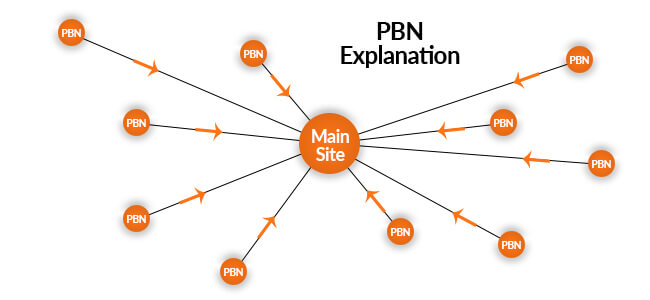All Categories
Featured
Table of Contents
- – What Is The Most Valuable Semantic Seo Insight...
- – How Do I Choose A Semantic Seo Strategies Serv...
- – What Is The Most Effective Semantic Content C...
- – Who Is The Top Structured Data For Semantic S...
- – What Is The Top Semantic Seo Framework Produ...
- – When Are The Top Schema Markup For Semantic ...
- – Who Is The Premier Seo With Semantic Search ...
The web is changing, ending up being much more and more semantic. SEO is also transforming and coming to be a lot more semantic. This is because internet search engine have actually developed and are relocating a lot more and extra towards reading web content on the internet. Obviously, that has also changed the method we develop material, especially if we intend to rank better in the online search engine.
Intertwingularity is not normally acknowledged, people keep claiming they can make things deeply hierarchical, categorizable and consecutive when they can not. Based on the connections between search objectives, the search engine favors a content in positioning by computing the distance in between the vectors of significance.
It enables you to see, starting from a subject, all the entities that relate to that topic. By doing this you can clearly see which entities/concepts/ideas have currently been covered on your internet site, and you can discover brand-new chances by understanding what content you can add and exactly how to create it.
What Is The Most Valuable Semantic Seo Insights For The Price
It is able to make your web content easy to understand for internet search engine on the one hand and for your target market on the various other. Structuring your web content version highlights your material and its hidden partnerships so that search engines can acknowledge you among numerous pieces of details, making you extra visible to individuals that meet the search intent related to your service.
In semantic SEO copywriting, an editor begins from a more comprehensive series of topics and customizes the content to consist of semantically relevant terms and phrases that aid viewers understand a subject, comparable to reading content in a wiki. From a material writing perspective, one useful method to do this is to create a vocabulary of terms and questions surrounding your target topic.
How Do I Choose A Semantic Seo Strategies Service?
Discover more regarding by enjoying the by!.

Semantic search refers to the process of exactly how online search engine recognize and match search phrases to a searcher's intent in natural search results page. Prior to semantic search, internet search engine like Google operated like matchmakersaligning specific words in your question with those precise words on web pages. The results were uncomplicated but often did not have deepness.
What Is The Most Effective Semantic Content Creation And Why
It makes it possible for Google to use quick, exact response to look inquiries regarding real-world subjects. When you type a query word into Google, you're not simply going into a series of words. You take advantage of an intricate web of significances and connections. Google's Knowledge Chart sees these words as entities with context and relationships.
When you browse for "Apple," Google does not just see a word that explains a fruit. It identifies Apple as a company and can give related information. Like the name of its CEO, Tim Chef, or its most current stock costs. Google revealed the Hummingbird update in 2013. It was Google's solution to the surge of voice searches, where questions ended up being extra conversational and nuanced.
Who Is The Top Structured Data For Semantic Seo Company
By integrating NLP, Hummingbird permitted Google to relocate past plain keyword matching. It assisted the online search engine comprehend search intent, increasing the odds that results would precisely match the reason behind a user's search. As the third crucial ranking element after content and web links, RankBrain has actually enhanced Google's semantic search abilities to recognize the significance of search questions.
Making it much more effective at dealing with never-before-seen search inquiries. RankBrain thinks about more than simply key phrases when assessing a search question.
It brings results that match the search phrases and straighten with the total intent of providing young puppy training guidance. And if the customer often looks for dog-related content, Google may focus on much more in-depth training guidesrecognizing the user's recurring passion in the subject. Integrating technologies like the Knowledge Graph, Hummingbird, and RankBrain, semantic search aids the Google algorithm analyze and link information throughout a vast internet of information.
What Is The Top Semantic Seo Framework Product?
The focus shifts from keyword option to an all natural approach including customer intent, topical significance, and general user experience. Creating content that deals with the searcher's requirements with extensive information can enhance your SERP rankings. Listed below, we outline the fads and methods that consolidate the demand for semantically educated web content. Later, we give workable suggestions to transform these insights into ideal techniques.
And type of material can best please their requirements. A more comprehensive technique to material aligns much better with semantic search's change away from exact keyword phrase matching and towards customer intent. Which clarifies the boosted focus on topic clusters, rather than specific search phrases. Content that covers search inquiries more completely not only pleases users.
UX aims to develop an aesthetically enticing, easy to use interface with appealing, quality web content that motivates visitors to stay. Semantic search technology allows search engines to intend for results that provide the ideal possible UX.
When Are The Top Schema Markup For Semantic Seo Sales

All display Google's ability to address a subject question comprehensively. By recognizing the context and intent behind customer questions, internet search engine can provide a lot more pertinent details and potentially boost individual engagement. Personalization in search results produces better UX.Based on your past search history and choices as a user, semantic search helps internet search engine tailor the outcomes to suit your special needs and passions.
It brings results that match the key words and align with the total intent of offering puppy training suggestions. And if the customer often looks for dog-related material, Google might focus on extra comprehensive training guidesrecognizing the user's recurring interest in the topic. Integrating innovations like the Knowledge Graph, Hummingbird, and RankBrain, semantic search assists the Google formula analyze and link data across a substantial web of info.
Who Is The Premier Seo With Semantic Search Manufacturer
The focus changes from keyword option to an all natural approach including user intent, topical significance, and overall user experience. Developing material that resolves the searcher's needs with detailed details can improve your SERP rankings.

A more comprehensive method to content aligns much better with semantic search's change away from exact keyword phrase matching and towards user intent. Material that covers search inquiries extra completely not just satisfies customers.
And 5 times greater than sites that take 10 secs to lots. While technological SEO ensures optimal site efficiency and ease of access, concentrating on individual experience (UX) takes it an action even more. UX intends to develop a visually enticing, user-friendly interface with interesting, quality material that encourages site visitors to stay. Semantic search modern technology makes it possible for online search engine to go for results that provide the very best feasible UX.
All display Google's capacity to attend to a subject query adequately. By comprehending the context and intent behind customer questions, online search engine can supply more appropriate information and possibly increase user involvement. Customization in search engine result makes for far better UX.Based on your previous search history and preferences as an individual, semantic search helps online search engine customize the results to match your one-of-a-kind needs and rate of interests.
Table of Contents
- – What Is The Most Valuable Semantic Seo Insight...
- – How Do I Choose A Semantic Seo Strategies Serv...
- – What Is The Most Effective Semantic Content C...
- – Who Is The Top Structured Data For Semantic S...
- – What Is The Top Semantic Seo Framework Produ...
- – When Are The Top Schema Markup For Semantic ...
- – Who Is The Premier Seo With Semantic Search ...
Latest Posts
Who Is The Most Reliable Tools For Semantic Seo In My Area
What Is The Leading Optimizing For Semantic Search Business?
Is It Worth Paying For Semantic Seo Platform?
More
Latest Posts
Who Is The Most Reliable Tools For Semantic Seo In My Area
What Is The Leading Optimizing For Semantic Search Business?
Is It Worth Paying For Semantic Seo Platform?